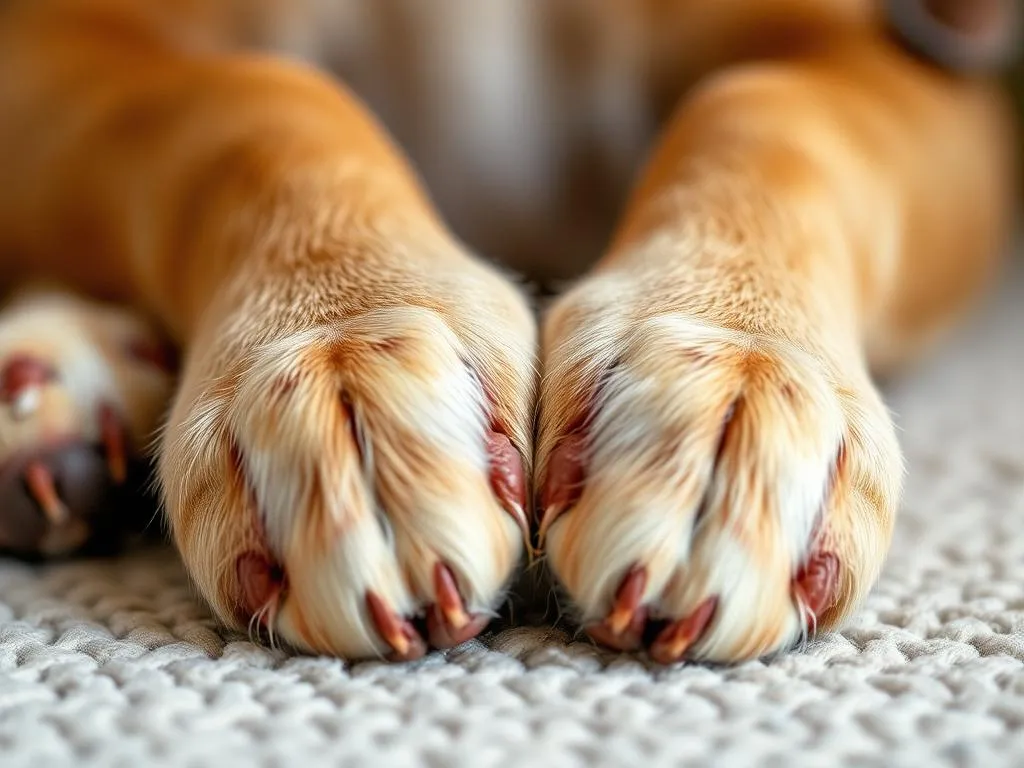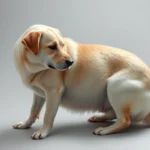
Maintaining your dog’s health is one of the most rewarding responsibilities of pet ownership. Among the many aspects of dog care, attention to their paws is crucial. If you’ve ever wondered, why are my dog’s paws so rough, you’re not alone. Rough paw pads can be a common issue that signals various underlying problems, from environmental factors to health conditions. Understanding the anatomy of your dog’s paws, potential causes of roughness, and effective care methods can not only enhance your dog’s comfort but also prevent more serious health issues.
Understanding Dog Paw Anatomy
Structure of Dog Paws
A dog’s paw is a complex structure consisting of several parts, each serving a vital function. The key components include:
- Pads: The tough, rubbery surfaces on the bottom of their feet that provide traction and cushioning.
- Claws: The nails that help with gripping surfaces and self-defense.
- Digital Cushion: The fatty tissue that aids in shock absorption and supports the pads.
- Carpal Pad: The small pad located on the back of the front legs that provides additional grip and stability.
Understanding this anatomy is essential because any issues affecting these parts can lead to discomfort, pain, or mobility challenges.
Common Paw Conditions
Roughness in your dog’s paw pads can manifest through various conditions, including:
- Cracks: Often seen in dry weather, these can lead to pain or infection.
- Calluses: Thickened areas that form due to constant pressure or friction.
- Infections: Bacterial or fungal infections that can cause inflammation and roughness.
Recognizing that roughness may be a symptom of these underlying problems is critical for timely intervention.
Causes of Rough Dog Paw Pads
Environmental Factors
One of the primary reasons for rough dog paws is environmental exposure. Different surfaces can affect paw health:
- Concrete and Hot Pavement: These abrasive surfaces can wear down pads, leading to roughness.
- Rough Terrain: Hiking or walking on rocky paths can cause cuts and scrapes.
- Seasonal impacts: In winter, salt used on roads can irritate and dry out paw pads, while summer heat can cause burns.
Health Issues
Several health conditions can lead to rough paw pads:
- Allergies: Dogs can be allergic to certain foods or environmental factors, leading to inflammation and roughness.
- Skin Conditions: Conditions like dermatitis or fungal infections can cause significant changes in paw texture.
- Nutritional Deficiencies: A lack of essential fatty acids or vitamins may result in dry, rough paw pads.
Behavioral Factors
Behavior can also play a significant role in the condition of your dog’s paws:
- Excessive Licking or Chewing: Dogs may lick their paws due to stress, boredom, or discomfort, leading to rough patches.
- Lack of Regular Grooming: Not maintaining your dog’s paws through regular grooming can contribute to roughness and other issues.
Symptoms to Look For
Signs of Rough Paws
You might be wondering what rough paws look like. Typically, rough paw pads may appear:
- Dry and cracked
- Thickened or calloused
- Discolored (red or darkened areas)
Additionally, other symptoms may accompany roughness, such as:
- Redness: This could indicate irritation or infection.
- Swelling: Swollen paws may point to underlying issues needing attention.
- Limping: If your dog is favoring a paw, it could be a sign of pain or injury.
When to Seek Veterinary Attention
While some roughness may be benign, there are instances when professional evaluation is necessary. Consider seeking veterinary attention if:
- The roughness is accompanied by severe redness, swelling, or oozing.
- Your dog shows signs of pain or discomfort (e.g., limping or reluctance to walk).
- The condition persists despite home care efforts for more than a week.
It’s essential to listen to your instincts as a pet owner; when in doubt, consulting a veterinarian can provide peace of mind.
Prevention and Care
Regular Maintenance
Regular maintenance is key to preventing rough dog paws. Here are some practices to consider:
- Paw Checks: Regularly inspect your dog’s paws for signs of roughness, cracks, or foreign objects.
- Grooming: Regularly trim the claws and groom the fur around the paws to prevent matting and debris accumulation.
Recommended products for paw care include:
- Paw Balms: These can help moisturize and protect your dog’s paw pads.
- Moisturizers: Look for pet-safe options that can soothe and hydrate dry areas.
Creating a Safe Environment
Protecting your dog’s paws starts at home. Consider these tips:
- Safe Walking Surfaces: Try to avoid abrasive or extremely hot surfaces when walking your dog.
- Paw Protection in Extreme Weather: In winter, consider dog booties to protect against salt and ice, while in summer, avoid walking during peak heat hours.
Nutritional Support
A well-balanced diet can significantly impact your dog’s skin and paw health. Consider:
- Foods Rich in Essential Fatty Acids: Omega-3 and Omega-6 fatty acids can help maintain healthy skin and fur.
- Supplements: Speak to your veterinarian about adding supplements that can support skin and paw health.
Treatment Options
Home Remedies
If your dog’s paws are rough, several home remedies can help alleviate the issue:
- Natural Oils: Coconut oil or olive oil can be massaged into the paw pads for moisture.
- DIY Paw Balms: Create a soothing balm using natural ingredients like beeswax, coconut oil, and shea butter.
Veterinary Treatments
For more severe cases, veterinary intervention may be necessary. Possible treatments include:
- Medications: Prescription creams or ointments to treat infections or severe dryness.
- Laser Therapy: In some cases, this can promote healing in damaged paw pads.
Always follow your vet’s guidance to ensure your dog receives the appropriate care for their specific condition.
FAQs about Dog Paw Care
Common Questions
Why do my dog’s paws smell?
A foul odor may indicate an infection or issues like yeast growth. Regular cleaning and drying can help mitigate this, but persistent odors warrant a vet visit.
Can rough paws lead to other health issues?
Yes, if left untreated, roughness can lead to more severe problems, including infections or pain that affects mobility.
How often should I check my dog’s paws?
Regular checks should be part of your grooming routine, ideally at least once a week or more frequently if your dog is active or exposed to rough environments.
Expert Opinions
Veterinarians often emphasize the importance of regular paw care and monitoring for changes. According to pet care specialists, a proactive approach can prevent many issues associated with rough paws and ensure your dog’s overall well-being.
Conclusion
Understanding why my dog’s paws are so rough is essential for maintaining their health and comfort. By recognizing the anatomy of dog paws, being aware of potential causes for roughness, and implementing preventative and treatment strategies, you can ensure your furry friend stays happy and healthy. Regular care and attention to their paws, combined with professional veterinary guidance when needed, will contribute significantly to their quality of life. Remember, a little effort in paw care goes a long way in keeping your dog happy and healthy!









